Disaster Risk Reduction
Taxonomy Term List
Readiness for the National Adaptation Plan Process in Ecuador
Ecuador faces significant development challenges due to prevailing social, economic, and environmental conditions. The country’s vulnerability to the impacts of climate change, coupled with limited conditions for effectively integrating climate change adaptation into policies and development plans at various levels, poses a significant obstacle to progress.
Anticipated impacts include biodiversity loss, water system susceptibility, agricultural production reduction, public health challenges, and risks to infrastructure and human settlements. Climate change also exacerbates existing inequalities, especially impacting women in productive activities, and contributes to gender-based violence. Addressing these challenges is essential for Ecuador’s sustainable development and resilience.
With the support of the ‘Green Climate Fund Readiness and Preparatory Support for National Adaptation Plan in Ecuador’ project, the Government of Ecuador developed a National Adaptation Plan (NAP) constituting the basis for adaptation management at the national level, in accordance with the National Climate Change Strategy.
Development methodologies, tools, indicators, policies, capacity-building programs and studies were foreseen to create the enabling conditions for the reduction of vulnerability and climate risk in six sectors prioritized for adaptation: Water Heritage; Food Sovereignty, Agriculture, Livestock, Aquaculture and Fisheries; Natural Heritage; Health; Productive and Strategic Sectors; and Human Settlements, as well as new or ongoing programs and projects in those sectors.
Aligned with Ecuador’s Constitution and National Development Plan, the project addressed gaps and needs identified during the NAP proposal phase. It followed the guidance of the Least Developed Countries Expert Group (LEG) Technical Guidelines on NAP, focusing on improving climate projections, enhancing institutional capacities, providing training, designing measurement and verification mechanisms, and formulating strategies for financing and sustainability. The project, implemented by UNDP with the Ministry of Environment as the National Designated Authority (NDA), aimed to facilitate the integration of climate change adaptation into development planning at various levels.
The National Adaptation Plan Project in Ecuador (PLANACC) was aligned with the Constitution of Ecuador, reflecting the state's commitment to adopting measures in response to climate change and protecting populations at risk. The project also aligned with the National Strategy for Climate Change 2012-2025 and Ecuador’s Nationally Determined Contribution (2020-2025). Likewise, the Organic Code of the Environment (2018) and its Regulations (2019) determined the National Adaptation Plan (NAP) as a key instrument for climate action that enables the implementation of the National Climate Change Strategy 2012-2025.
In addition to the implementing partner, the Ministry of Environment, Water and Ecological Transition, project partners included the National Planning Secretariat and the sectoral ministries providing technical and political support related to development planning.
The PLANACC Project served as the instrument for creating the necessary conditions for climate change adaptation in the country, leading to the formulation of the NAP as both a public policy document and a management tool.
The project enabled the Government of Ecuador to contribute to the creation and strengthening of technical capacities (individual and institutional) to facilitate the integration of climate change adaptation into the central and local government's development planning and budget processes. The resources have also enabled the generation of climate information with better resolution and scale, as well as assessments of vulnerability and climate risks at sectoral, territorial, and local levels. In addition, the funds allowed for the design of technical tools and instruments (guidelines, standards, strategies, etc.) to guide the integration of climate change adaptation into development planning and enable the dissemination of results. The project also supported the formulation of financing strategies.
Key results:
The project focused on generating technical information and creating the enabling conditions that allowed for the design of the National Adaptation Plan, while also strengthening the institutional capacities of sectoral entities and local governments on adaptation management, as listed below. The NAP (2023-2027) was published by the UNFCCC in March 2023.
Datasets:
- Updated national climate projections and other relevant climate studies.
- Backfilling, updating, and homogenization of official hydrometeorological data.
- Generation of lines and sub-lines of research on climate change (as part of a National Research Agenda).
- Numerical model of the wave dynamics on the Ecuadorian coast.
Guidelines and technical studies:
- NAP (2023-2027) submitted and approved at the national level.
- Six sectoral climate risk analyses (one for each prioritized adaptation sector).
- Portfolio of conservation and recovery practices for rural production land that are resilient to climate change.
- Several guidelines to integrate climate change adaptation into development planning processes, including risk management in Human Settlements.
- Methodologies for sectoral climate risk assessments, applying impact modeling for the identification of biophysical impacts.
- Design and implementation of the methodology for the adaptation component of the 1st NDC Implementation Plan.
Political instruments:
- Integration of the climate change adaptation variable into Ecuador's Wetlands Action Plan
- Update of the management plan for the Ecological Reserve “Los Ilinizas”, including the variable of adaptation to climate change.
- Design of the implementation strategy for prioritized adaptation actions as part of the NDC Implementation Plan- adaptation component.
- Generation of technical, scientific, and regulatory tools & instruments, useful for the CCA management.
Capacity Building Products and Processes:
- Design of a Toolbox to integrate climate change into development plans and territorial planning at subnational level and complementary training program, training more than 1000.
- Design of a MOOC about fire management and climate change adaptation and conducted complementary training workshops.
- Conducted workshops on climate migration and its impact on women and children: needs, challenges, and recommendations for action.
- Implementation of virtual tools and face-to-face training courses to strengthen professional skills of 1,200 technicians.
- Synergies created and technical support provided to national and regional climate change projects.
- Provision of technical assistance addressed to public research institutes & universities (INOCAR, INAMHI and IKIAM)./li>
Gender-responsive instruments:
- Development of a Wikipedia on gender and climate change adaptation (included in the Adaptation platform).
- Database of good adaptation practices with a gender perspective.
- Inventory of shortcomings and gaps of the social, economic, and environmental information using a gender-responsive focus to prepare assessments of climate risk in the prioritized sectors for climate change adaptation.
- Provision of technical assistance and training for integrating gender approach in adaptation processes.
Communication:
- Creation of the first virtual adaptation repository platform (including newsletters, courses, information on initiatives, and NAP data).
- Communication and Awareness-Raising Strategy to integrate climate change adaptation into development planning processes.
- Generation of recreational tools for raising awareness and training girls, boys, and adolescents on CCA.
- Development of a contest of illustrated stories for children on climate change and implementation of an exhibition at the Interactive Science Museum. Until 02/02/2023 more than 15,000 visitors were received.
Lessons learned
The NAP process in Ecuador yielded valuable lessons and best practices. The utilization of innovative biophysical impact models for sectoral climate risk analyses proved to be a complex and time-consuming endeavor. Moreover, the socialization and participatory construction of the NAP demanded meticulous planning, development, and adherence to official communication and dissemination guidelines.
Adaptation planning, based on the outcomes of comprehensive climate risk analyses, ensured the availability of reliable information for decision-makers and technicians. Crucially, the empowerment of the National Designated Authority (NDA), the Ministry of Environment, played a pivotal role in sustaining the continuity of the NAP process. Actively involving relevant stakeholders not only empowered them with the results achieved during the NAP formulation phase but also fostered commitment to planned adaptation actions.
Furthermore, the generation of studies, regulations, and technical tools for CCA needs alignment with national, sectoral, and local needs, with an emphasis on flexibility to accommodate changes in regulations, sectoral policies, and the composition of institutional technical teams.
Output 1: National mandate, strategy and steering mechanisms are in place and gaps are assessed and addressed.
Output 2: Preparatory elements for the NAP are in place to develop a knowledge base and formulate the NAP.
Output 3: NAP implementation is facilitated.
Output 4: Mechanisms for reporting, monitoring and review of NAPs and adaptation progress in place.
Output 5: Funding strategy for the NAP and climate change adaptation is available.
Ministerio del Ambiente presentó oficialmente el Plan Nacional de Adaptación al Cambio Climático (2023,Ministry of Environment, Water, and transition)
Los gobiernos provinciales aportan a la construcción del Plan Nacional de Adaptación al Cambio Climático (2023, ConGoPE)
Scientific dissemination, a key pillar for understanding climate change
Updating climate projections, a comprehensive process
Adaptation to climate change is possible by promoting capacity building processes
The country's higher education has a new master's degree in climate change
The country's higher education has a new master's degree in climate change
Talking about climate change from different perspectives of communication
Climate migration, time to join forces
Advancing adaptation and gender equality in Ecuador (also on Exposure)
Development of a virtual skills course focused on adaptation to climate change
Ecuador presented the results of the report of the Intergovernmental Panel on Climate Change
Updating climate projections, a comprehensive process
Ministry promotes illustrated story contest for children on climate change
Technicians are trained in numerical model to predict floods on the coasts of Ecuador
Ministry presented the first digital platform for adaptation to climate change in the country

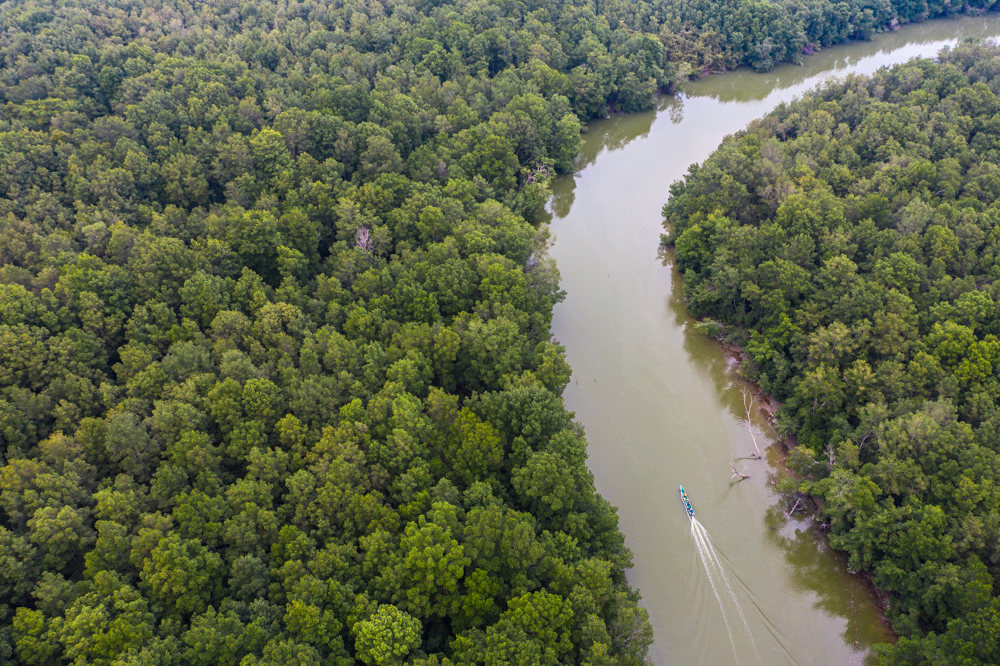
Support for strengthening climate change adaptation planning for the Federal Republic of Somalia
The project aims to strengthen the national and state level capacity and coordination for climate change adaptation planning and implementation in Somalia. Barriers in effective adaptation include weak institutional coordination and capacity for adaptation planning and implementation at the federal level, a lack of technical, institutional, and managerial capacity for climate change adaptation planning at the state level, and a lack of investment planning and enabling conditions for financing climate change adaptation interventions. The project aims to support the government in overcoming these barriers considering the double challenge Somalia faces - the threats of internal conflict within the region and effects of climate change simultaneously. These unique circumstances require a different approach to addressing climate adaptation priorities, and Somalia’s National Adaptation Plan (NAP) process must be consistent with these governance challenges with specific attention paid towards the fragility of the country.
The project "Support for Strengthening Climate Change Adaptation Planning for the Federal Republic of Somalia" project is supporting the Government of Somalia to strengthen the national and state level capacity and coordination for climate change adaptation planning and implementation. The project builds on the foundation that was created when the country formulated its National Adaptation Programme of Action (NAPA) in 2013. The project addresses the priorities that were elucidated in the country’s Nationally Determined Contribution (NDC) and is consistent with the ratified National Development Plan.
Somalia is among the most vulnerable countries to climate change in the world. Somalia’s arid and semi-arid lands make up more than 80% of the country’s landmass and are prone to extreme weather conditions including periods of extended drought, highly erratic rainfall, and strong winds. Droughts occur frequently and are often followed by devastating floods. Recent studies indicate that droughts have intensified in terms of their frequency, severity and geospatial coverage over the last 50 years. Flooding and droughts have been identified as the primary climate threats in Somalia’s Nationally Determined Contributions. Climate impacts multiply existing threats to the attainment of food and water security, productive livelihoods, health and human development capabilities of the people of Somalia. Climate impacts also exacerbate conflicts over natural resources and contribute to the challenges posed by large numbers of internally displaced persons. A major factor contributing to vulnerability is the political instability and internecine conflict that has vexed Somalia since 1991. Somalia’s context of fragility requires that climate adaptation is integrated within the process of dealing with crises and addressing governance challenges to contribute to a greater stability.
The project has three primary outcomes focusing on enhancing the national institutional coordination, strengthening capacity for climate change adaptation planning at the national and state level, and strengthening financial planning for climate change adaptation. Expected results include:
- Climate change adaptation capacities and interagency coordination at key agencies strengthened;
- Tools, methodologies, and information platform to support the NAP process developed;
- State climate change adaptation frameworks developed and harmonized with the national framework;
- Preliminary climate change adaptation plans formulated at the state level;
- Climate change adaptation mainstreamed into institutional and governance support at the state level;
- NAP implementation financing plan formulated.
The project has been designed to integrate with the ongoing nation building and associated initiatives that aim to strengthen governance and institutions. The project activities are planned in states where UNDP already has ongoing operations in order to avoid potential security related risks.
Project updates
- The project supported the establishment of the National Climate Change Coordination Committee (NCCCC) in collaboration with the Directorate of Environment and Climate Change (DOECC) as per the Climate change policy of Somalia.
- An institutional review of roles and responsibilities of national institutions has been conducted identifying capacity gaps to effectively adapt to climate change within priority sectors and key ministries. The results inform further project activities such as the capacity development at the Directorate of Environment and Climate Change. Currently, a study is being conducted to clarify and formalize the roles of federal, state, and district governments to improve federal-state coordination on the formulation and implementation of policies, strategies, plans, and programs related to climate change adaptation.
- A steering committee was established that will ensure coordination with the 9th National Development Plan (NDP9) Pillar groups and ensure alignment with the national DRR strategy and the Sendai Framework and other relevant programs and initiatives to support the climate change adaptation planning. The Steering Committee consists of government agencies, civil society organizations, state governments, development partners, private sector and others.
Outcome 1: National institutional coordination and capacity for adaptation planning enhanced.
Outcome 2: Strengthened capacity for climate change adaptation planning at the state level.
Outcome 3: Strengthened financial planning for climate change adaptation.

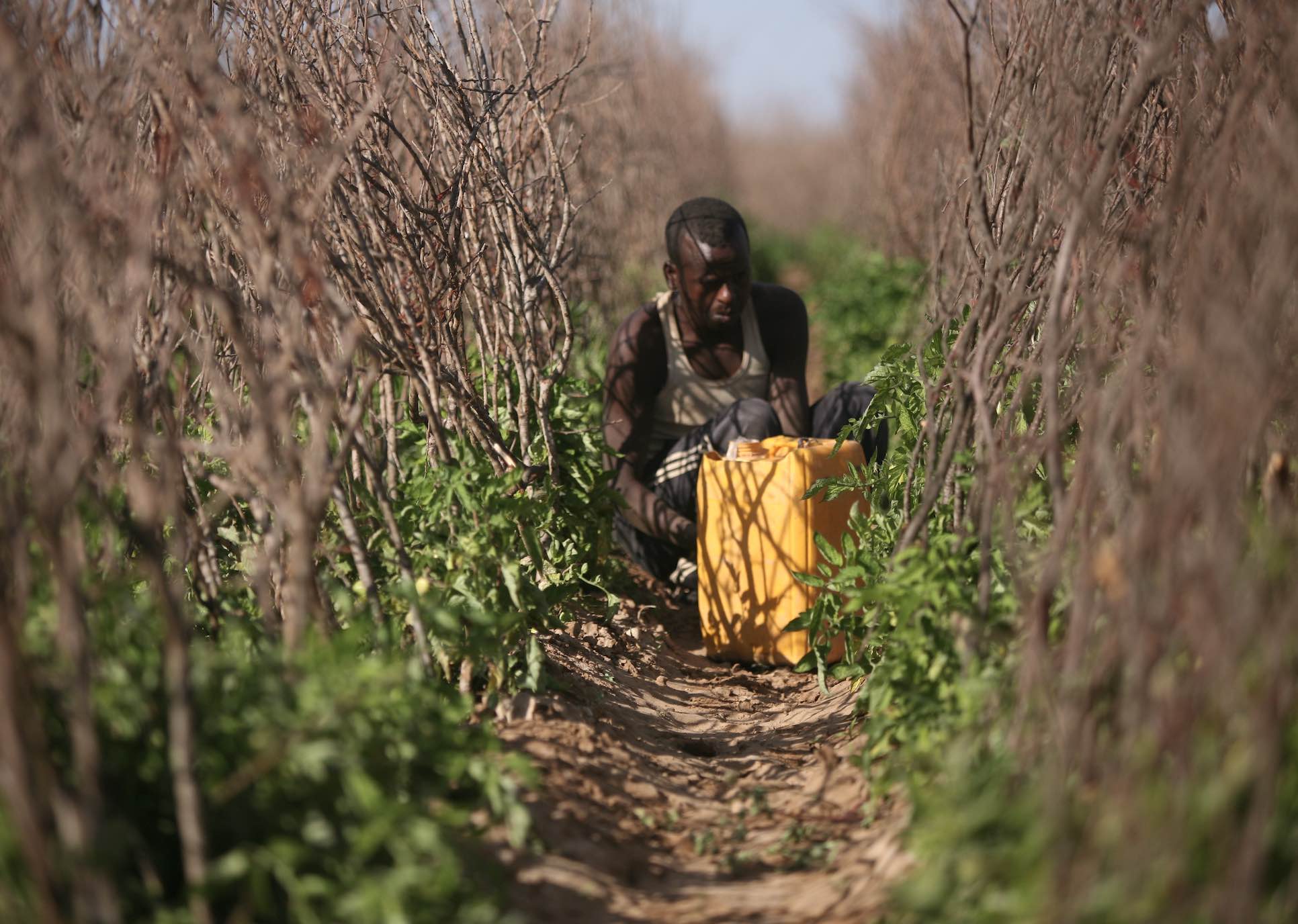
Strengthening climate information and early warning systems for climate resilient development and adaptation to climate change in Guinea
The 4-year project (2019 - 2023), "Strengthening climate information and early warning systems for climate resilient development and adaptation to climate change in Guinea", sought to support strengthened national capacities, including the participation of communities to prevent, reduce, mitigate and cope with the impact of the systemic shocks form natural hazards. The project also aimed to strengthen the capacity of developing countries to mainstream climate change adaptation policies into national development plans.
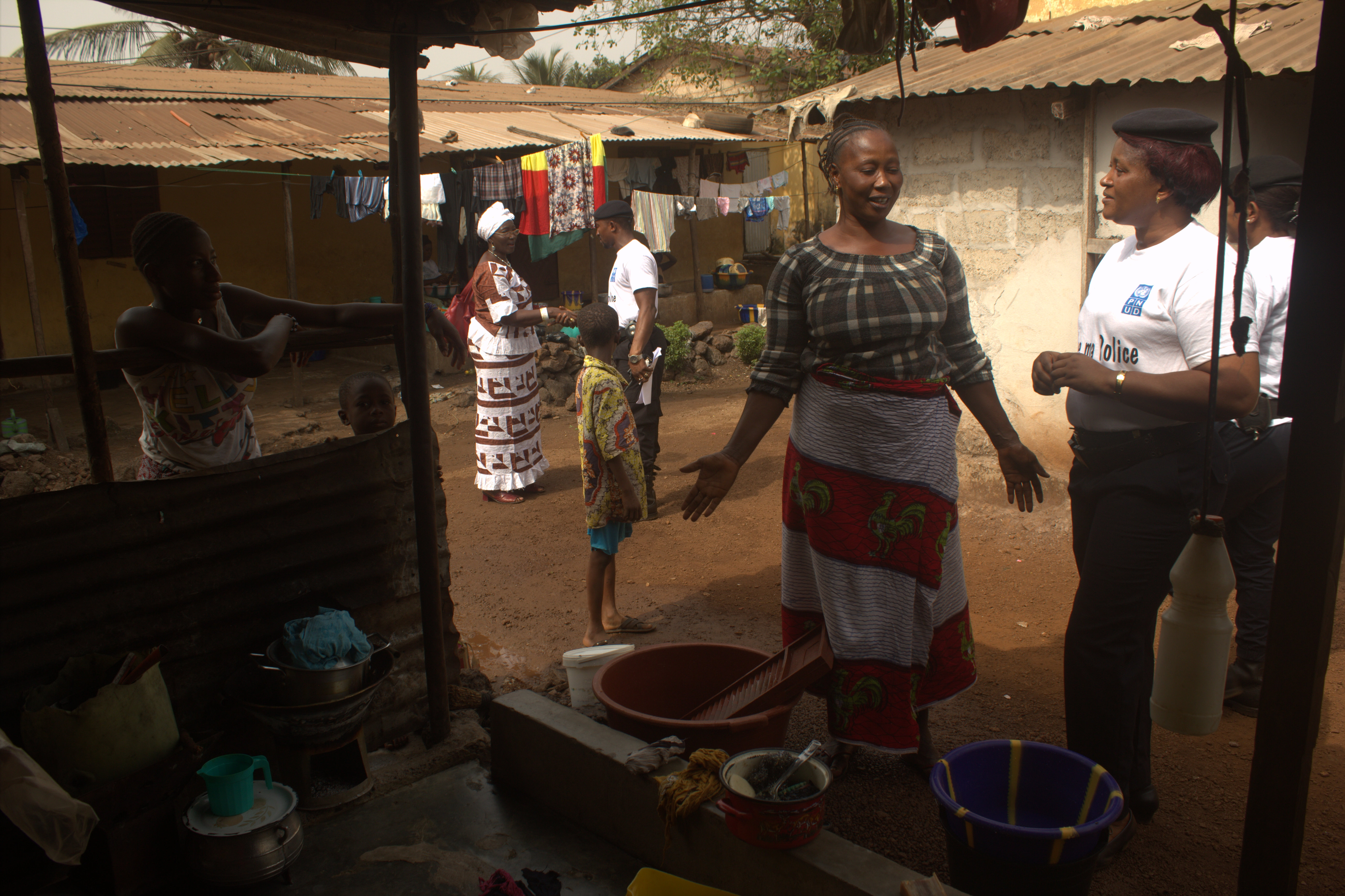
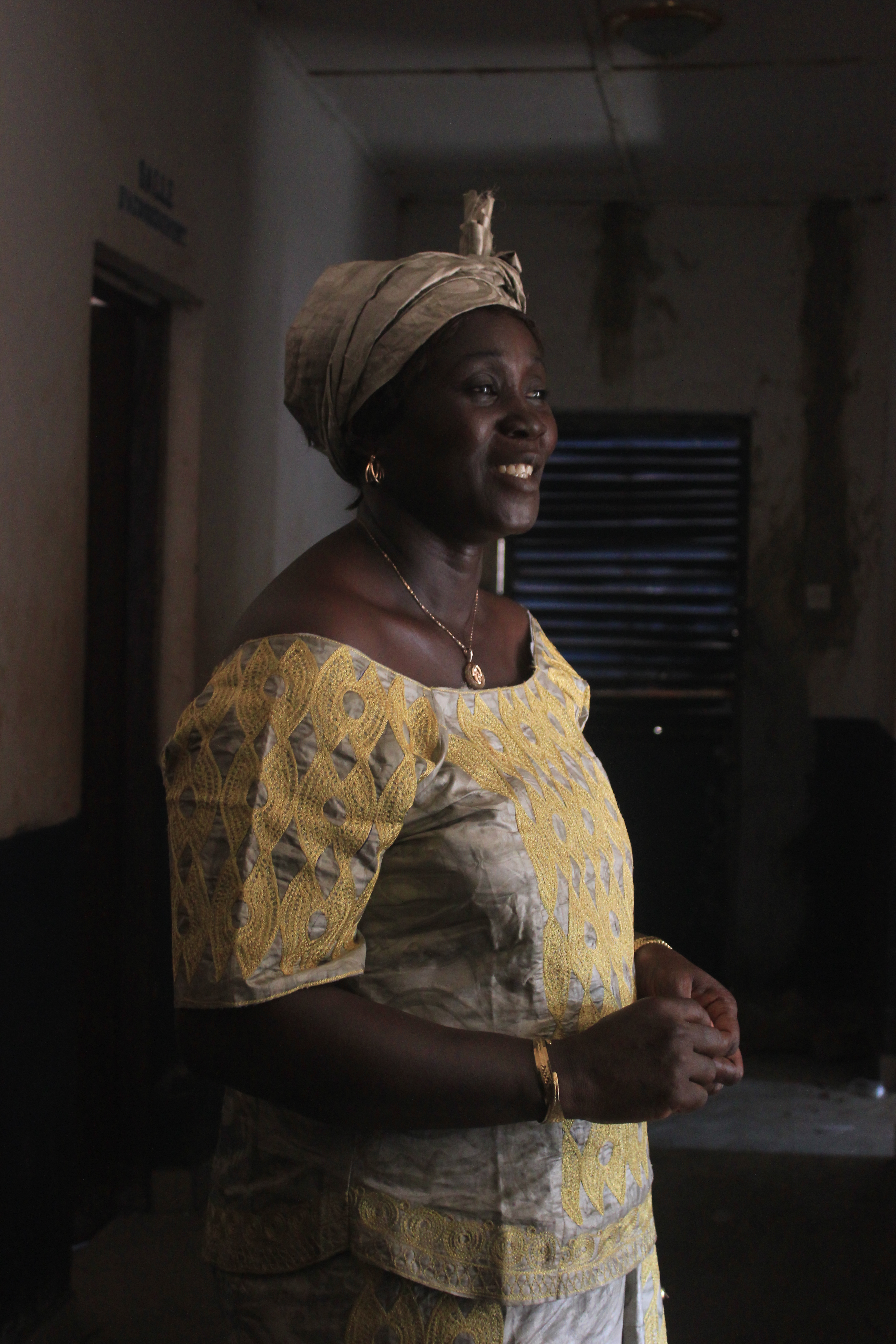
Expected Outcomes:
• 1. Enhanced capacity of national hydro-meteorological (NHMS) and environmental institutions to monitor extreme weather and climate change
• 2. Efficient and effective use of hydro-meteorological and environmental information for making early warnings and mainstreaming CC in the long-term development plans
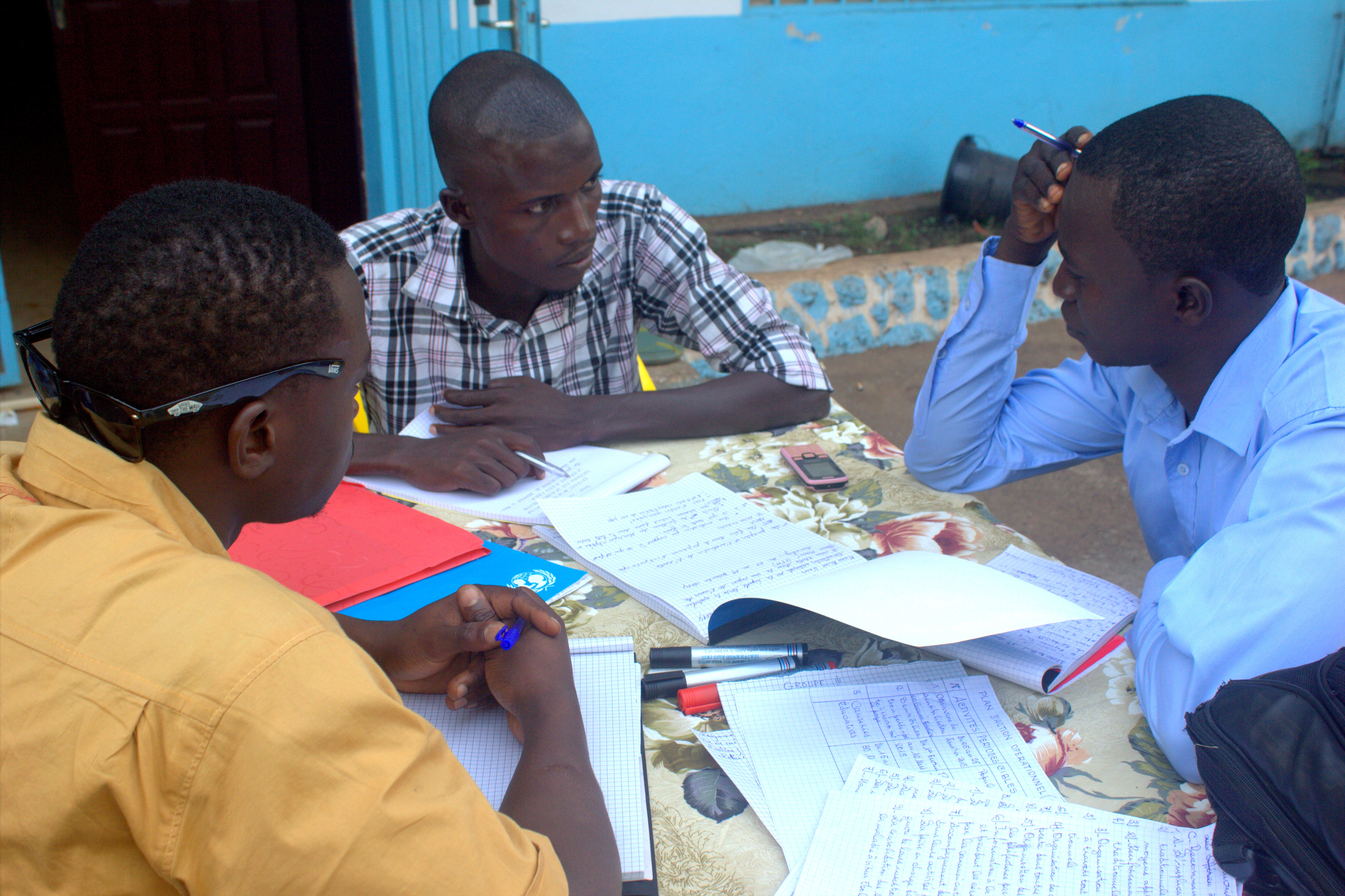
Outcome 1. Enhanced capacity of national hydro-meteorological (NHMS) and environmental institutions to monitor extreme weather and climate change
Outcome 2. Efficient and effective use of hydro-meteorological and environmental information for making early warnings and mainstreaming CC in the long-term development plans
Integrated Flood Management to Enhance Climate Resilience of the Vaisigano River Catchment in Samoa
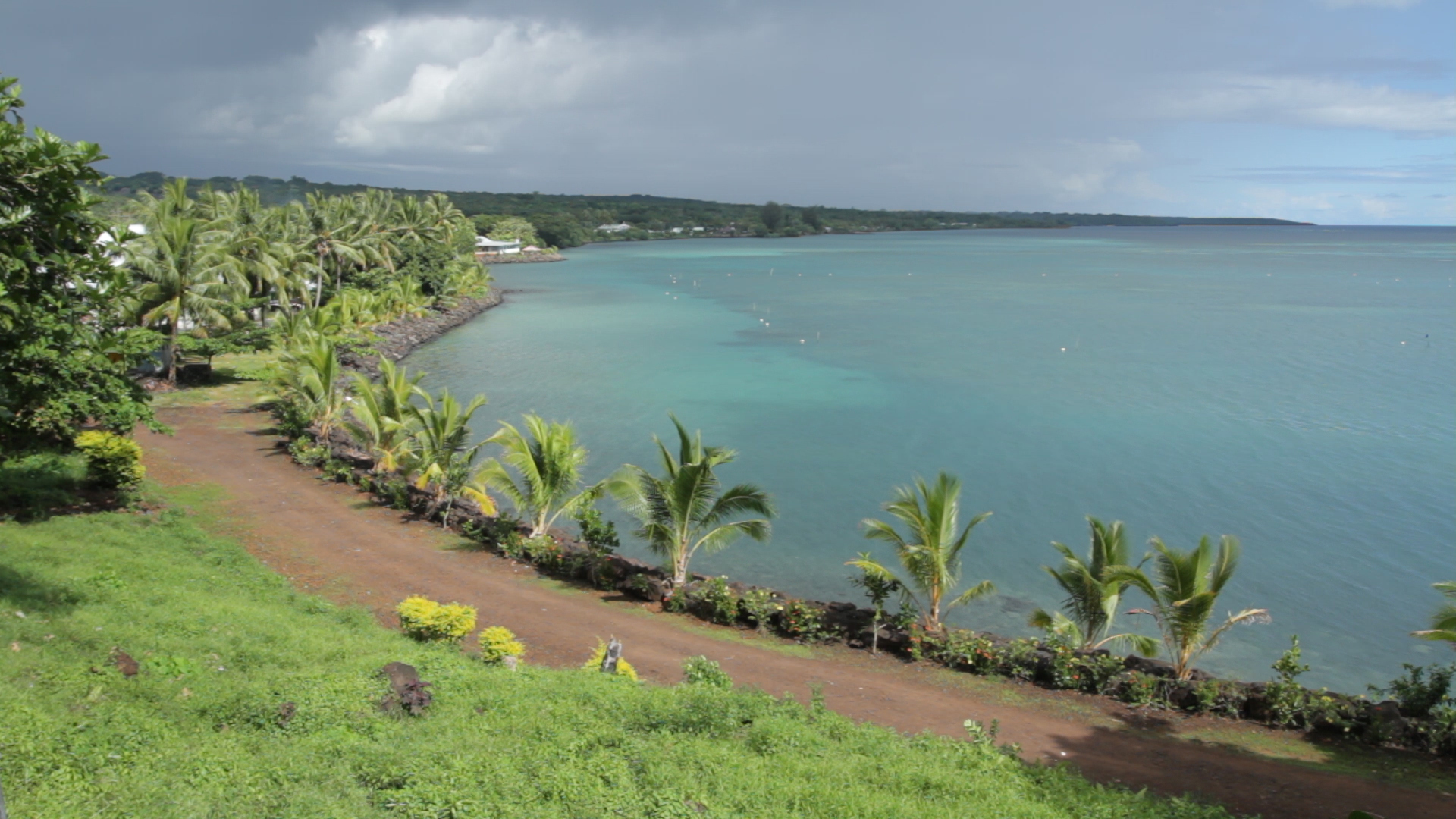
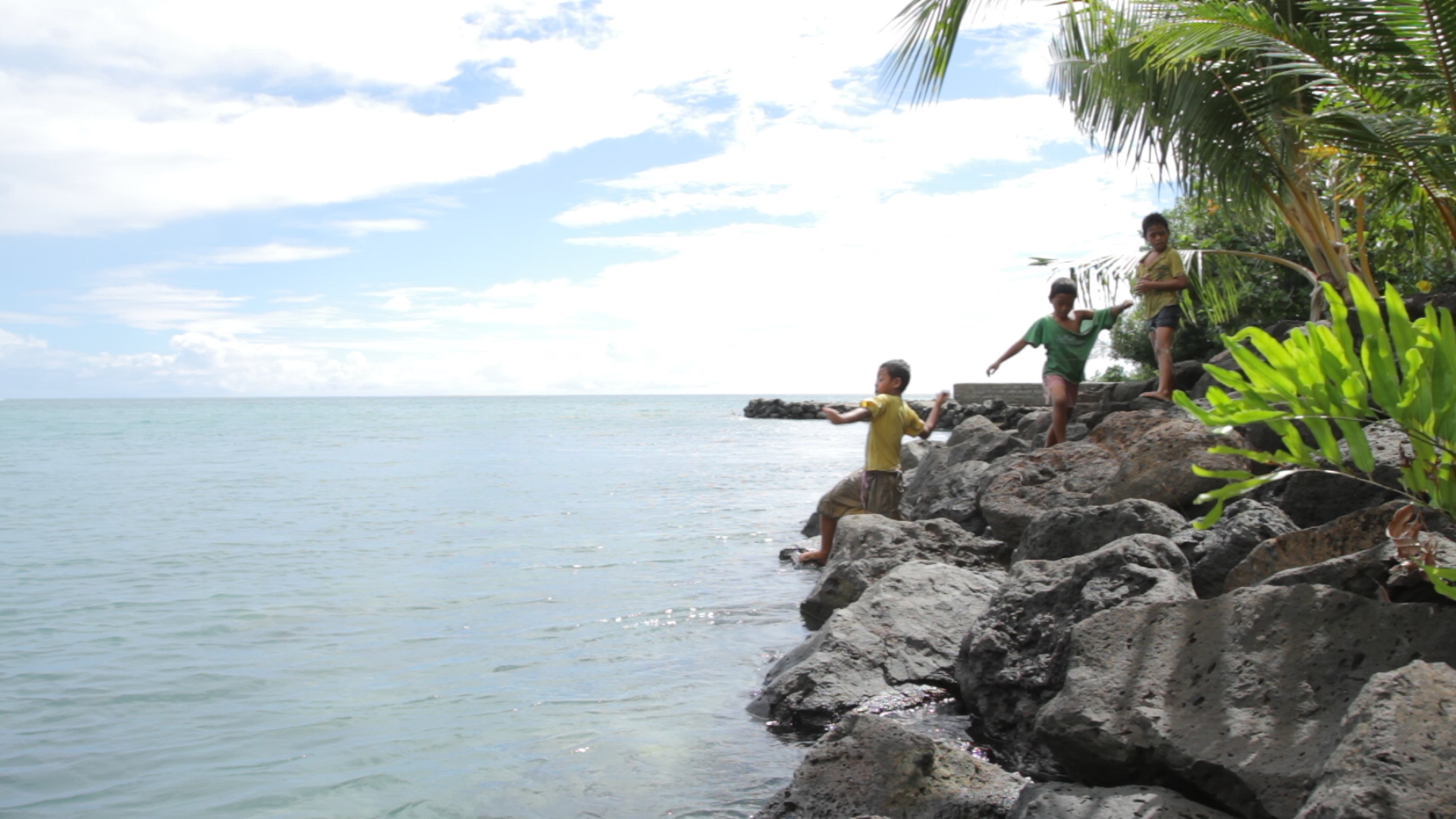

Newsletter
Vaisigano Catchment Project (GCF-VCP) Newsletter | Issue 29, August - September 2022
ProDocs
GCF resources will be used to implement a combination of integrated watershed and flood management works including both hard and soft measures. This includes upgrading river works to cater to increased water flows during flood events (taking into account the likelihood of the increased frequency of extreme events), ensuring that infrastructure works, and home dwellings, government and private-sector buildings are made more secure and provide adequate shelter in case of floods and their aftermaths. Additionally, the project will ensure that when floodwaters occur, the excess waters are channeled away through an effective, efficient, and fit-for-purpose drainage system. The project will consequently play a critical role in assisting the urban population and economy to effectively manage the inevitable increased intensity and frequency of flooding.
Direct benefits from these interventions include reduced risk of damage to public and private infrastructure/assets; reduced possibility of loss of life; and enhanced land value in flood-prone areas. Indirect benefits include reduced losses in income/sales; reduced costs of clean-ups, maintenance and repairs; reduced costs of relief and response efforts; and reduced possibility of health hazards. In addition to these 26,000 direct beneficiaries, the general population of Samoa will benefit from the safeguarding of critical economic assets and learning that will be generated.
In addition, mid and upstream ecosystem and community-based adaptation measures will enhance capture, infiltration, storage and delayed release of rainwater in soils and biomass, and water retention ponds will serve both climate-smart agribusiness development and combat degradation of vulnerable ecosystems through appropriate agro-forestry land-use practices.
Addressing Climate Change in Samoa
Recent extreme events have resulted in approximately US$200 million worth of damages during each event. Climate projections for Samoa suggest that the risk of climate induced events will increase, potentially undermining development progress in urban Apia where the majority of the population and economic activity is located.
Given the topography of the country, extreme events result in significant river discharge that results in flooding of lowland areas. Recent tropical events such as Cyclone Evan have caused significant damage to both public and private assets as a result of flooding, resulting in serious health impacts. Urban infrastructure has suffered considerably from the recurrence of flooding and is unable to cope as climate change-related events are expected to become more frequent and intense.
Projected climate change scenarios cited by the Australian Commonwealth Scientific and Industrial Research Organization (CSIRO) suggest that Samoa is expected to have more frequent and extreme rainfall events; more frequent and longer drought events; increased air and water temperatures; sea level rise; and more frequent extreme wind events.
The project represents the Government of Samoa’s initial steps in operationalizing a comprehensive flood management solution for the likely consequences of extreme events in Apia, the capital with about 80,000 people. In this project, three interlinked project outputs will be pursued:
- Capacities and information base strengthened for the Government of Samoa to pursue an integrated approach to reduce vulnerability towards flood-related risks;
- Key infrastructure in the Vaisigano River Catchment are flood-proofed to increase resilience to negative effects of excessive water; and
- Upgraded drainage in downstream areas to increase capacity and allow for more rapid outflow of flood waters.
'Launching of the Flood Alert Sirens (a first of its kind in Samoa) within the vicinity of the Vaisigano River Catchment Area', Government of Samoa, November 29 2022
'CSSP Market Day for Beneficiaries of the Green Climate Fund-Vaisigano Catchment Project (GCF-VCP) Ecosystem based Enterprise Development Programme (EbAEDP)', Government of Samoa, September 8 2022
'Celebrating the women at the helm of Samoa’s biggest ever climate change and disaster resilient project on International Women’s Day', March 8, 2019.
Monthly Project Newsletter, Issue 1, July 2019.
'Rebuilding the Lelata Bridge to be tougher and higher', Samoa Observer, January 23, 2019.
'GCF Vaisigano River Catchment Site Visit with Assistant Secretary General of the United Nations and Director of UNDP's Regional Bureau for Asia and Pacific, Haoliang Xu', UNDP Samoa Facebook, June 2018.
'Samoa kicks off climate adaptation project to benefit 1 in 3 citizens facing flood risk' UNDP, October 25, 2017. In the lead up to COP climate talks in Bonn, the launch of a Green Climate Fund-financed US$65 million project signals strong global support for climate-resilient development in Small Island Developing States.
'Every dollar counts in fight against climate change - New GCF Funding for Samoa' - Samoa Observer, December 16, 2016. Op-ed celebrating Somoa's recently approved US$58 million Green Climate Fund project.
YouTube
Learn more about the climate challenges facing Samoa, and how UNDP is working to address those challenges and reduce risks.
Samoa GCF-funded project to help address #climate-induced flooding
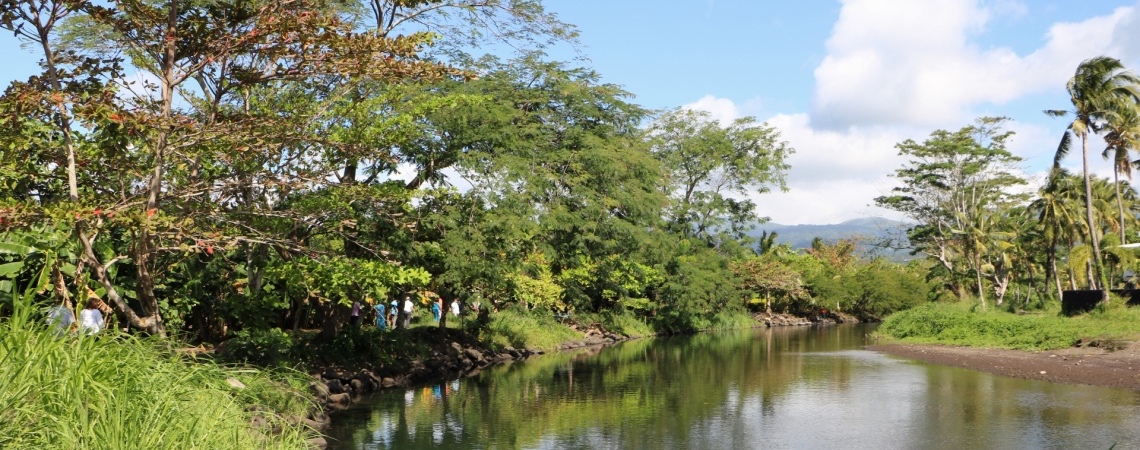
Output 1. Strengthening capacities and mechanisms for integrated approach to reduce flood-related risks in place.
Output 2. Key infrastructure in the Vaisigano River Catchment are flood-proofed to increase resilience to negative effects of excessive water.
Addressing the Risks of Climate Induced Disasters in Bhutan through Enhanced National and Local Capacity for Effective Actions
The current NAPA II project, Addressing the Risk of Climate-Induced Disasters through Enhanced National and Local Capacity in Bhutan, will address urgent and immediate climate change adaptation needs and leverage co-financing resources from national government, bilateral and other multilateral sources, and the private sector. The project is working to “enhance national, local and community capacity to prepare for and respond to climate induced multi-hazards to reduce potential losses of human lives, national economic infrastructure, livelihood and livelihood assets.”
The USD 11.49 million project is funded by Global Environment Facility/Least Developed Countries Fund, and coordinated by the National Environment Commission Secretariat in partnership with UNDP, Bhutan. The project will safeguard essential economic and livelihood infrastructure in hazard-prone communities and key industrial areas from increasing climate hazards such as floods, landslides, windstorms and forest fire through reducing vulnerability at high-risk areas and increasing adaptive capacity of community-level disaster risk management institutions.
Source: UNDP Bhutan Project Identification Form (May 1, 2012), and the Bhutan NAPA II brochure, June 2015.
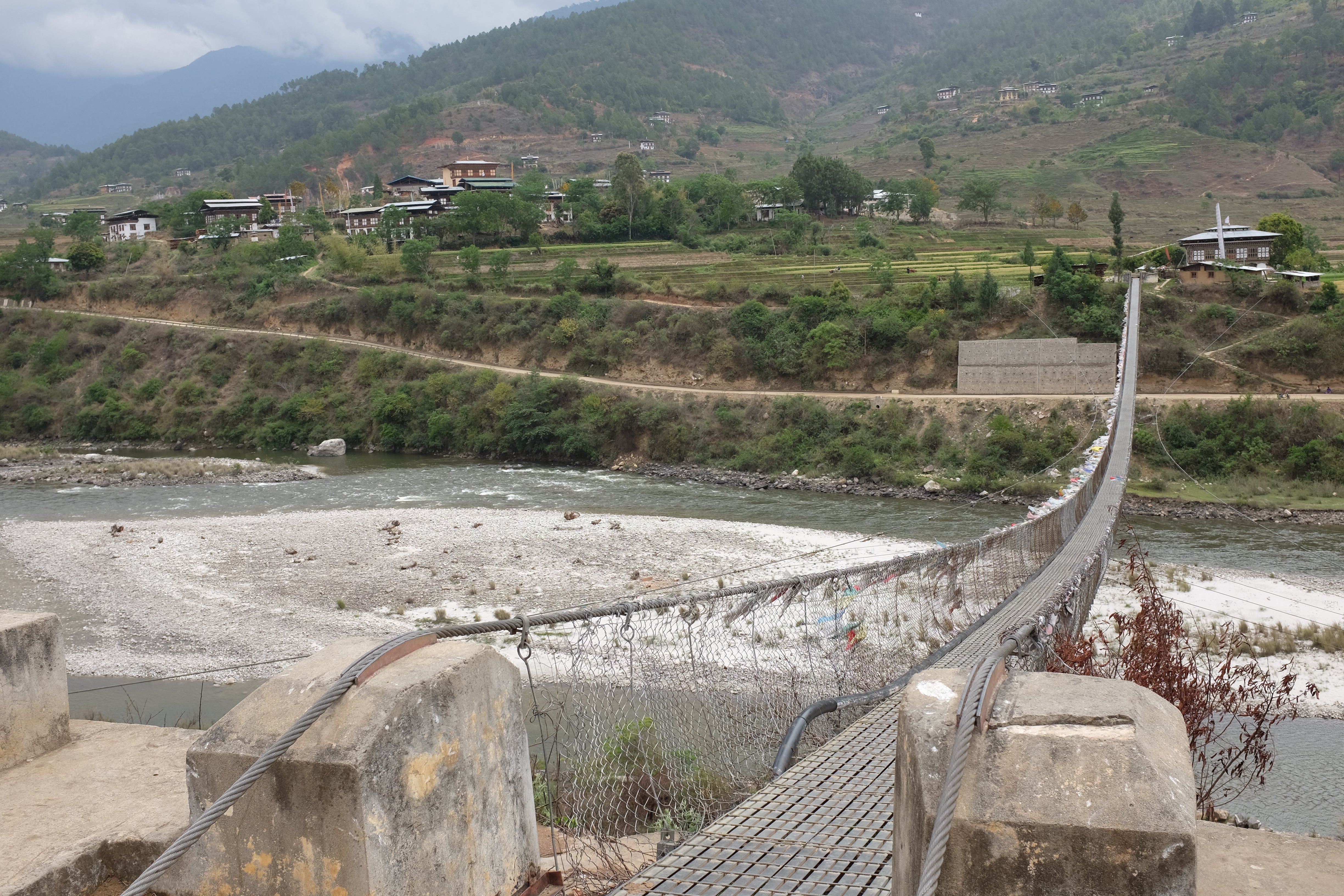
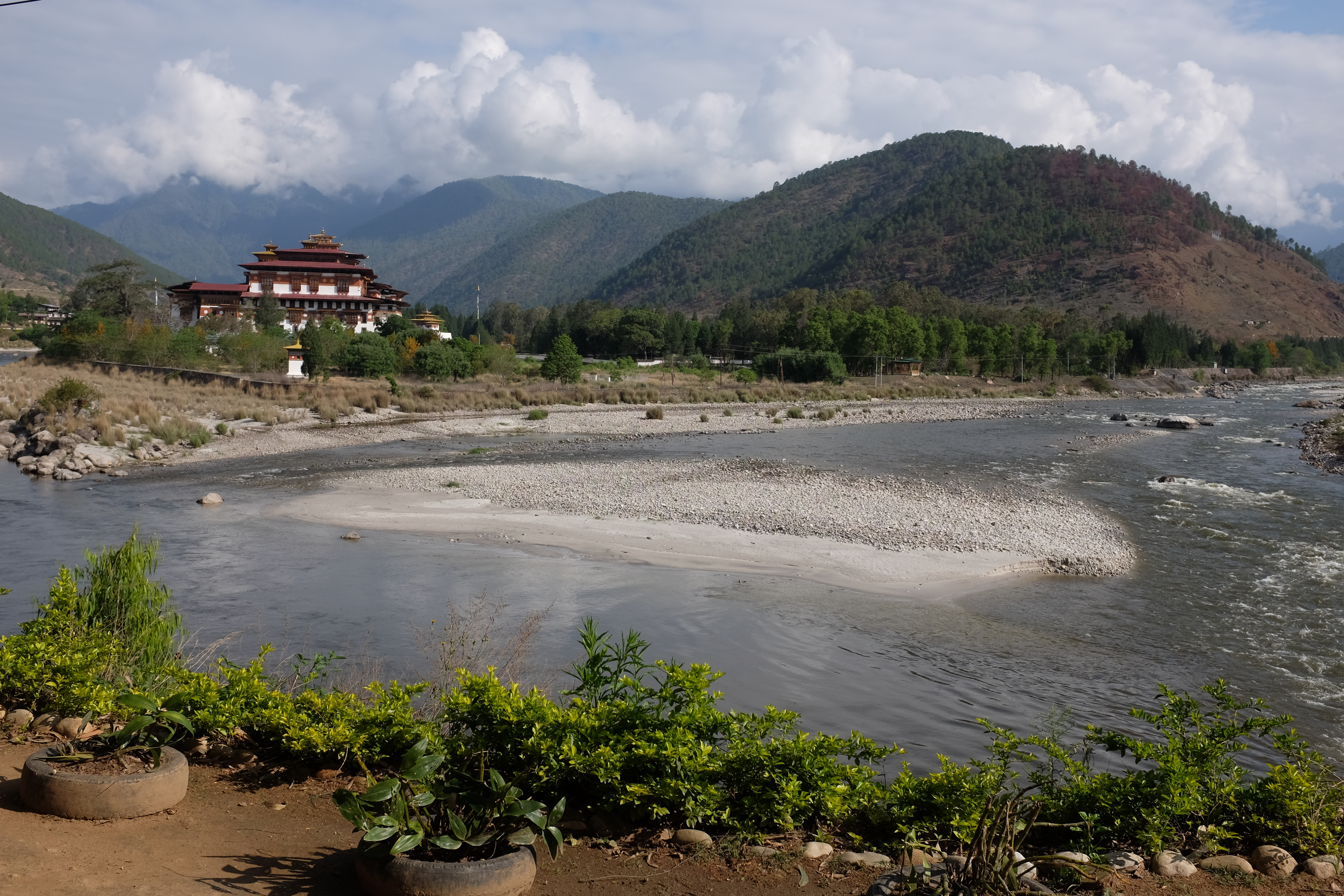
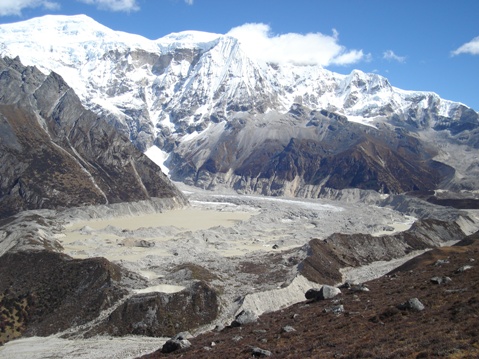
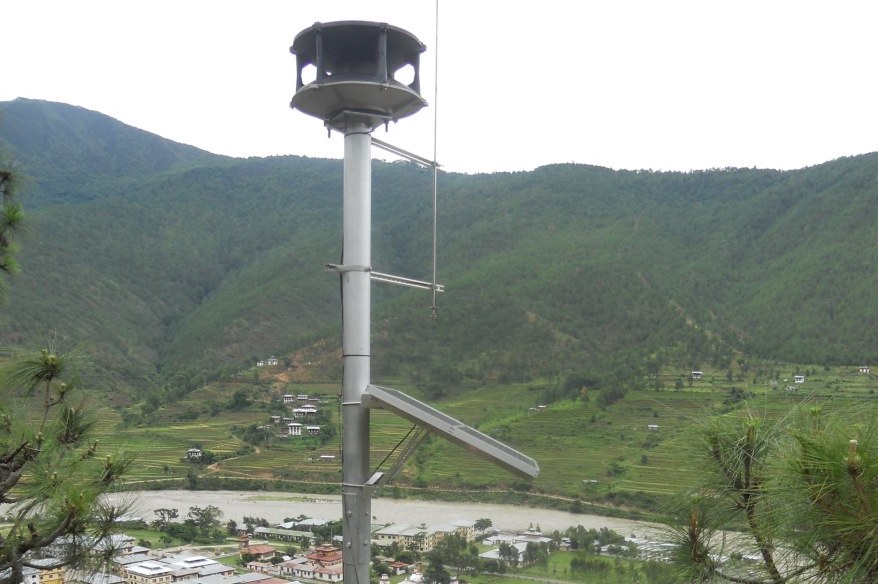
Brochures, Posters, Communications Products
Brochure - ADAPTING TO CLIMATE CHANGE: Implementing Bhutan’s National Adaptation Programme of Action (NAPA) II Project
Assessments and Background Documents
Plans and policies of relevance to NAPs for Least Developed Countries (LDCs)
Bhutan National Adaptation Programme of Action (NAPA) Official Document - May 2006
PIFs
The overarching objective of the project is to increase national, local and community capacity to prepare for and respond to climate-induced multi-hazards to reduce potential losses of human lives, national economic infrastructure, livelihoods and livelihood assets. This objective is fully aligned with the development priorities of the RGoB as set out in Bhutan’s tenth 5-year plan, which is in turn underpinned and guided by the long-term development vision of Gross National Happiness (GNH) and Bhutan 2020: A Vision for Peace, Prosperity and Happiness. Under the four pillars of GNH (i.e. sustainable and equitable socio-economic development; environmental conservation; preservation and promotion of culture; and good governance), the 5-year plan places a strong emphasis, among others, on balanced rural-urban development for poverty alleviation, expansion/maintenance of key economic infrastructure including road infrastructure that connects rural and urban centers, and strengthening of the agricultural sector which continues to employ the majority of Bhutanese and be the backbone of the rural economy.
This project will implement priority interventions addressed in Bhutan's National Adaptation Programme of Actions corresponding to the following objectives, in part or full, as outlined in NAPA profile:
- Disaster management strategy
- Weather forecasting system to serve farmers and agriculture
- Landslide management and flood prevention
- Flood protection of downstream industrial and agricultural area
- Rainwater harvesting
- Promote community-based forest fire management and prevention
Situated on the southern slope of the Eastern Himalayas, Bhutan’s landscape is mountainous and rugged with elevations ranging from 100m in the southern foothills to 7500m towards north. Due to its topography, habitable and arable areas are limited to approximately 8.3% and 2.9%, respectively, of the landmass. Agriculture, which employs 69% of the population and accounts for 78% of monetary income in rural households, and industrial activities are largely practiced in this highly confined space that its topography permits. While Bhutan is in general endowed with abundant water resources from the four major rivers and their tributaries, most of the large rivers are at the bottom of valleys and gorges rendering these rich water resources largely inaccessible for agriculture or domestic use. As a result, irrigation is limited to areas near small perennial streams that exist above main rivers and majority of farmers rely primarily on monsoonal rains, which account for 60-90% of annual precipitation.
Bhutan is one of the most disaster prone countries in the Asia-Pacific region, irrespective of the presence of climate change. The country is exposed to multiple hazards, most prominently flash floods, landslides, windstorms, earthquakes, forest fires, and glacial lake outburst floods (GLOFs). In terms of relative exposure to flood risks (as % of population), Bhutan ranks fourth highest in the region. Although the direct human risks of landslides, windstorms, and forest fires are not particularly higher compared to other countries, the socioeconomic repercussions from these events are thought to be high due to the baseline poverty prevalence.
Climate change is likely to magnify the intensity and frequency of these hazards. In fact, according to the International Disaster Database, among the top 10 natural disasters in Bhutan between 1900 to 2012, in terms of the number of casualties and number affected, all of them occurred in the last two decades (except epidemic outbreaks), which makes certain degree of attribution of climate change to the increasing magnitude of such hazards plausible. The most pronounced consequences of climate change in Bhutan are two folds: disruptions in the monsoonal system and increasing/intensifying trends of extreme hydro-meteorological hazards, both of which are obviously closely linked. These disturbances will amplify the socioeconomic challenges for the Bhutanese society, especially in rural areas where the majority of the population is engaged in rain-fed agriculture and rampant poverty makes them least equipped to adapt to creeping changes in climate.
Monsoon rains generally arrive during the summer months (from late June to late September). Downscaled simulations undertaken in Bhutan’s SNC indicate that the mean annual rainfall will increase by 26-30% by 2069 compared to the baseline year of 1980. This increase occurs primarily during the summer monsoon season while the dry winter season rainfall is projected to decline slightly. In addition, accelerated melting of glaciers, which act as a gigantic natural water retention and dispensing mechanism to communities downstream, is disrupting the hydrological regime of the perennial river systems in the region. All in all, climate change will increase the uncertainty of water availability throughout the year, and rural farmers are likely to have to better manage high fluctuation of rainfalls – increasing volume of monsoonal rain so that they can sustain longer dry periods. This poses significant risks to development when built rural infrastructure to alleviate water shortages, such as communal rainwater harvesting, is minimally available.
Source: UNDP Bhutan Project Identification Form (May 1, 2012)
- Outcome 1: Risks from climate-induced floods and landslides reduced in the economic and industrial hub of Bhutan
- Output 1.1: Protection of Pasakha Industrial area from flooding events through riverbank protection, river training and development of flood buffer zones
- Output 1.2: Slope stabilization to reduce climate-induced landslides in the Phuntsholing Township
- Output 1.3: Integrated risk hazard assessment and mapping completed in 4 critical landslide and flashflood prone areas with data collection standards compatible with the national database
- Outcome 2: Community resilience to climate-induced risks (drought, flood, landslides, windstorms, forest fires) strengthened in at least four Dzongkhags
- Output 2.1: Climate-resilient water harvesting, storage and distribution systems designed, built and rehabilitated in at least four Dzongkhags, based on observed and projected changes in rainfall patterns and intensity
- Output 2.2: Community-level water resource inventory completed and maintained by Dzongkhag administration to increase the adaptive capacity of communities in the face of increasing water scarcity
- Output 2.3: Disaster Management Institutions at various levels established and trained in four Dzongkhags to prepare for, and respond to, more frequent and intense floods, storms and wildfire events
- Outcome 3: Relevant information about climate-related risks and threats shared across community-based organizations and planners in climate-sensitive policy sectors on a timely and reliable basis
- Output 3.1: Enhanced quality, availability and transfer of real-time climate data in all Dzongkhags which experience increasing frequency of extreme hydo-meterological events
- Output 3.2: Increased effectiveness of National Weather and Flood Forecasting and Warning Center through improved capacity to analyze, manage and disseminate climate information in a timely manner
Source: UNDP Bhutan Project Identification Form (May 1, 2012)
Project Start:
- Project Inception Workshop: will be held within the first 2 months of project start with those with assigned roles in the project organization structure, UNDP country office and where appropriate/feasible regional technical policy and programme advisors as well as other stakeholders. The Inception Workshop is crucial to building ownership for the project results and to plan the first year annual work plan.
Daily:
- Day to day monitoring of implementation progress: will be the responsibility of the Project Manager, based on the project's Annual Work Plan and its indicators, with overall guidance from the Project Director. The Project Team will inform the UNDP-CO of any delays or difficulties faced during implementation so that the appropriate support or corrective measures can be adopted in a timely and remedial fashion.
Quarterly:
- Project Progress Reports (PPR): quarterly reports will be assembled based on the information recorded and monitored in the UNDP Enhanced Results Based Management Platform. Risk analysis will be logged and regularly updated in ATLAS.
Annually:
- Annual Project Review/Project Implementation Reports (APR/PIR): This key report is prepared to monitor progress made since project start and in particular for the previous reporting period (30 June to 1 July). The APR/PIR combines both UNDP and GEF reporting requirements.
Periodic Monitoring through Site Visits:
- UNDP CO and the UNDP RCU will conduct visits to project sites based on the agreed schedule in the project's Inception Report/Annual Work Plan to assess first hand project progress. Other members of the Project Board may also join these visits. A Field Visit Report/BTOR will be prepared by the CO and UNDP RCU and will be circulated no less than one month after the visit to the project team and Project Board members.
Mid-Term of Project Cycle:
- Mid-Term Evaluation: will determine progress being made toward the achievement of outcomes and will identify course correction if needed. It will focus on the effectiveness, efficiency and timeliness of project implementation; will highlight issues requiring decisions and actions; and will present initial lessons learned about project design, implementation and management. Findings of this review will be incorporated as recommendations for enhanced implementation during the final half of the project’s term.
End of Project:
- Final Evaluation: will take place three months prior to the final Project Board meeting and will be undertaken in accordance with UNDP and GEF guidance. The final evaluation will focus on the delivery of the project’s results as initially planned (and as corrected after the mid-term evaluation, if any such correction took place). The final evaluation will look at impact and sustainability of results, including the contribution to capacity development and the achievement of global environmental benefits/goals. The Terminal Evaluation should also provide recommendations for follow-up activities.
- Project Terminal Report: This comprehensive report will summarize the results achieved (objectives, outcomes, outputs), lessons learned, problems met and areas where results may not have been achieved. It will also lie out recommendations for any further steps that may need to be taken to ensure sustainability and replicability of the project’s results.
Learning and Knowledge Sharing:
- Results from the project will be disseminated within and beyond the project intervention zone through existing information sharing networks and forums.
- The project will identify and participate, as relevant and appropriate, in scientific, policy-based and/or any other networks, which may be of benefit to project implementation though lessons learned. The project will identify, analyze, and share lessons learned that might be beneficial in the design and implementation of similar future projects.
- Finally, there will be a two-way flow of information between this project and other projects of a similar focus.
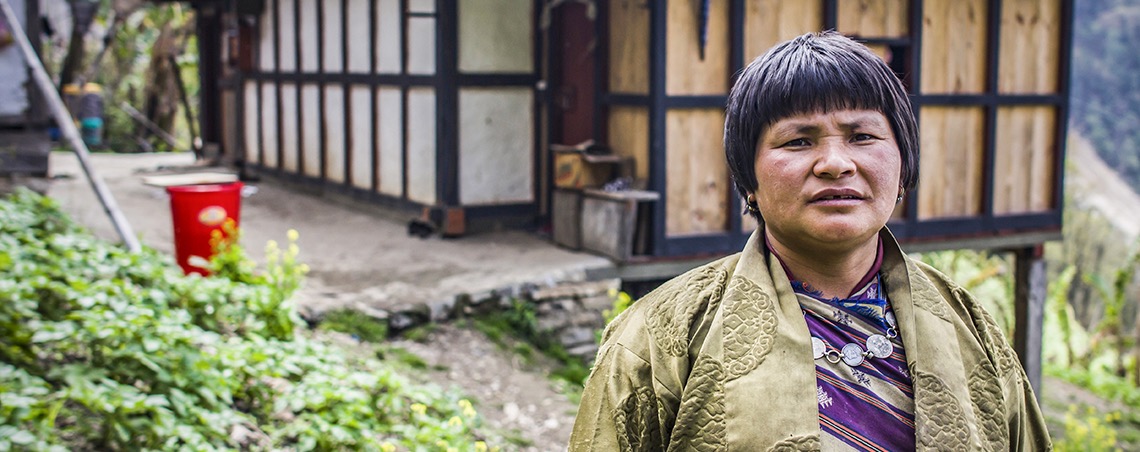
Strengthening Community Resilience to Climate Induced Natural Disasters in the Dili to Ainaro Road Development Corridor, Timor Leste
The government of Timor-Leste is currently investing heavily in transport infrastructure as a basis for securing the country’s long-term development goals. These investments are at risk as a result of climate change and therefore require a strategy to ensure their long-term sustenance. The Dili to Ainaro development corridor is one such region that is increasingly at risk from climate change and disaster related impacts including localized flooding, landslides and strong winds. Therefore, this project will focus on the populace dependent on critical economic infrastructure to make it more resilient through prevention and preparedness measures. Consequently, this will help to secure the medium to long-term development benefits of vulnerable local people of this region.
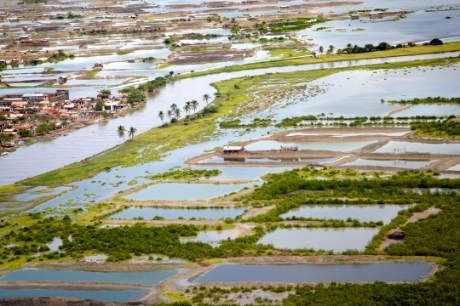
PIFs
Timor Leste – LDCF Project Identification Form (February 2013)
(More information to come)
The project has three main components with the following associated outcomes –
- Improved climate and disaster risk management is enabled through the establishment of a national training and knowledge hub focusing on climate risk and vulnerability assessment, damage and loss assessment, contingency planning among others (Outcome 1.1) and; the extension of national DRM policy and institutional roles to address climate change and disaster risk reduction measures, including assessment methods etc. (Outcome 1.2).
- Climate and disaster risk planning along with its budgeting and delivery is strengthened including the strengthening of district and sub-district Disaster Management Committees and District Disaster Operation Centres to plan, budget and deliver climate induced disaster prevention financing (Outcome 2.1) and; design of community to district level EWS systems for climate induced extreme events (Outcome 2.2).
- Investments are made in climate resilient community-based adaptation measures including community level climate change vulnerability and risk assessments with a specific focus on gender (Outcome 3.1) and; design and implementation of community level watershed management measures to reduce direct physical impacts of high intensity rainfall events in climate vulnerable hotspots along the Dili to Ainaro development corridor (Outcome 3.2).
(More information to come)
(More information to come)
'Joint Monitoring Dili to Ainaro Road Development: Strengthening community resilience in municipalities of Ermera, Aileu, Manufahi and Ermera', UNDP Timor-Leste, May 29, 2019.
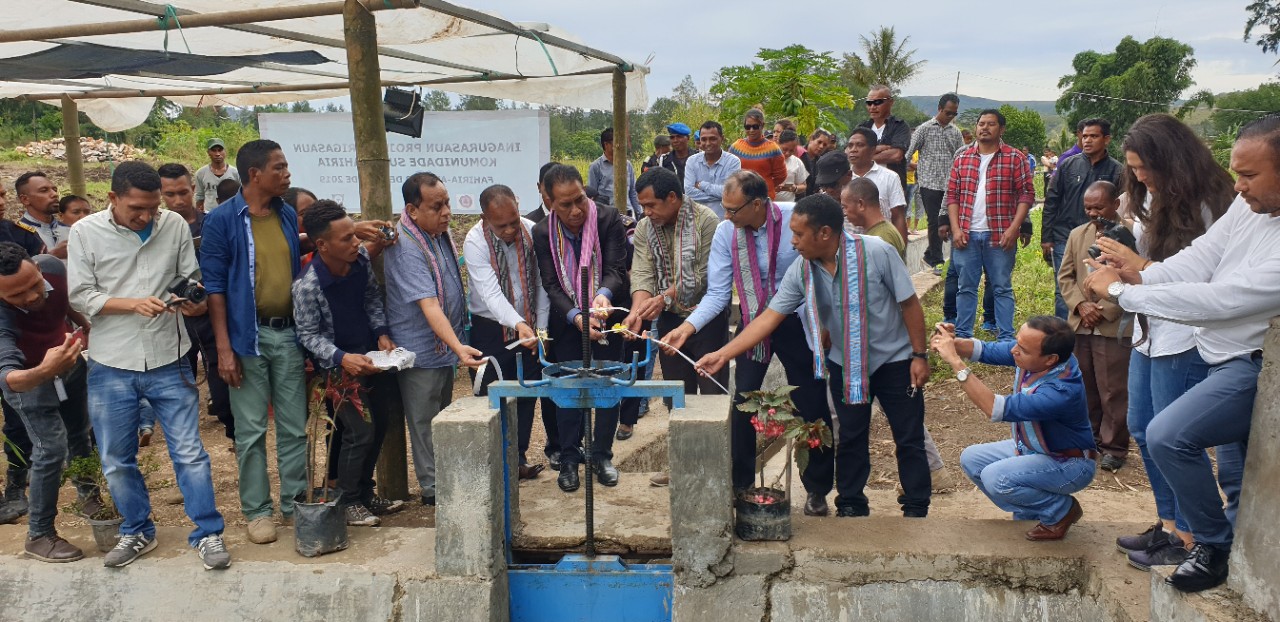
Implementing adaptation priorities through national development plans in Malawi
Extreme weather events have adversely impacted Malawi’s food security, water security, energy supply, infrastructure, human health and the sustainable livelihoods of family households. Further, the unsustainable use of natural resource costs Malawi USD191 million or 5.3% of GDP every year with the resulting forest cover in the country decreasing from 41% in 1990 to 35% in 2008.
This GEF-LDCF funded project, Implementing urgent adaptation priorities through strengthened decentralized and national development plans in Malawi, therefore looks at mainstreaming disaster risk reduction into sustainable development policies and planning processes at all levels of government, while establishing an effective system to identify, assess and monitor disaster risks including early warning systems in the country.
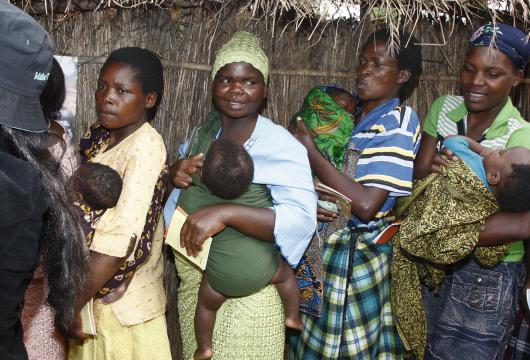
PIFs
(More Information to come)
The project has 3 primary components with associated outcomes –
- Integrated adaptation planning at District and Provincial levels including institutional analysis to determine CCA expenditures and CCA expenditure gaps within District level budgets (Outcome 1.1); Professional training on climate change integration in local development planning, policies (Outcome 1.2); Participatory assessments on vulnerability and adaptation to prioritize community CCA measures (Outcome 1.3); Community meetings to develop district-level disaster risk reduction and climate change adaptation plans for 4 vulnerable districts (Outcome 1.4); Integration of CCA priorities into the District Development Plans and budgets, and Local Council annual investment plans (Outcome 1.5); Integration of CCA resilience principles, priorities and role definition into development of district policies and regulations (Output 1.6); Integration of CCA resilience principles into results based management training undertaken in UNDP-supported governance programmes (Output 1.7); Addition of CCA vulnerability/CCA resilience indicators to district level databanks (developed in UNDP-supported governance programmes) for planning purposes (Output 1.8) and; Development of an incentive plan to support the effective deployment of roles and responsibilities (Output 1.9)
- Implementing urgent adaptation measures through decentralized planning processes including baseline rural development investments adjusted to become resilient to climate change (Output 2.1); Implementation of adaptation measures defined by communities during the development of the District-level adaptation plans to promote drought and flood management and climate resilience (Output 2.2); Provision of technical training and other support as defined by communities to implement the CCA plans sustainably (Output 2.3) and; Provision and use of weather forecast information on short timescales to manage risks to their livelihoods (Output 2.4).
- Implementing urgent adaptation measures through support to climate change policy processes and development of regulatory and fiscal frameworks at national level. This will include adjusting of budget preparation guidelines issued by Ministry of Finance to include climate change adaptation (Output 3.1); Training of 100 technical staff and managers in 5 relevant ministries to facilitate the investment plan development process (Output 3.2); Development of economic costing of adaptation priorities, based on public expenditure review and gap analysis (Output 3.3); Setting up of support programme for climate change adaptation costing work (Output 3.4); Integration of adaptation costing into a national, multi-sector adaptation investment plan (Output 3.5); Incorporation of adaptation investment priorities into the spending plans in 3 relevant ministries by 2014 (Output 3.6) and; Creation of regulatory and fiscal incentives to stimulate climate risk reduction by the non-government sector identified for three priority sectors (Output 3.7).
(More Information to come)
(More Information to come)
Supporting communities in climate change adaptation activities in Malawi
It cannot be debated that in Malawi, the livelihood of many people is heavily dependent on rain-fed agriculture. However, in recent years, the adverse impacts of Climate Change have been making the agriculture sector vulnerable. With the prolonged dry spells, seasonal droughts, changes in rainfall patterns and floods characterising the rainy seasons; these climate Change effects have been posing a serious risk to the productivity and profitability of crop farming in the country. To mitigate these challenges, UNDP in Malawi has been working hand in hand with the Government of Malawi to map pathways aimed at building resilient communities and minimize disruptions from climate disasters that affect everyday life and the local economy. The Government of Malawi - through the Ministry of Natural Resources, Energy and Mining, with support from UNDP and the Global Environment Facility (GEF) Least Developed Countries Fund - is implementing a project in 3 districts namely; Nkata-bay, Zomba and Ntcheu, to support the implementation of adaptation priorities through strengthened, decentralized and national development. The project aims at establishing and then demonstrate the institutional framework required to mainstream climate resilience and adaptation into development planning at local and national levels.
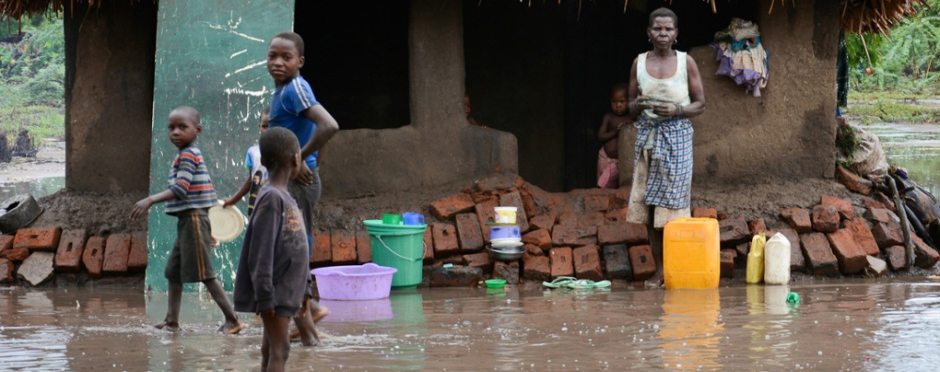
Community Disaster Risk Management in Burundi
The overarching goal of the project is to safeguard development benefits for vulnerable communities from future climate change induced risks. The community disaster risk management project will enhance local climatic governance by building capacity of key actors and providing necessary risks management tools (e.g. contingency plans, EWS). The project will also promote sustainable and equitable economic growth through the adoption of adaptation-related technologies aiming to rehabilitate and protect vulnerable communities assets
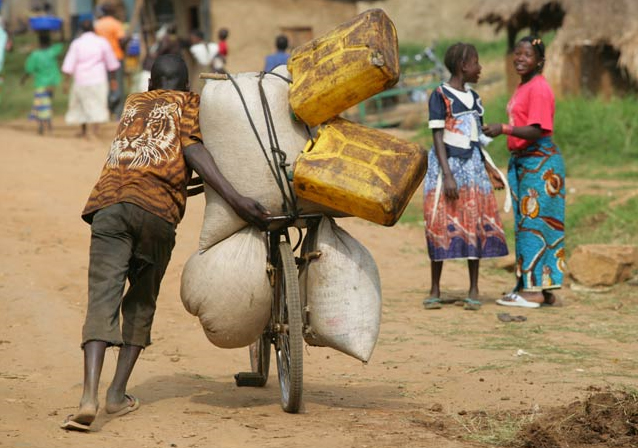
PIFs
The project is expected to have the following outcomes –
Capacity for disaster risks preparedness is developed through the establishment of early warning systems (Outcome 1.1); At least 50 staff from Bujumbura communal services and relevant ministry support services and about 400 people from vulnerable communities are trained to identify cost‐effective adaptation investments options (Outcome 1.2); Hazard risk maps are developed through livelihoods and infrastructure risk assessment with gender-focused analysis (Outcome 1.3); Policy actions are undertaken such as the revision of Congo-Nile watershed’s hydrological plans (Outcome 1.4) and; Local institutions and community groups are trained in the management and maintenance of tree plantation and anti-erosion (Outcome 1.5).
Effective disaster risk responses are established for long term and climate resilient emergency and reconstruction programme through protection of unstable grounds/ slopes and banks by planting 50,000 ha of specific trees and herbaceous/shrubby quickset hedges in Bugasera (Outcome 2.1); 25 km of anti-erosion small scale infrastructure are installed in Mumirwa (Outcome 2.2) and; Flood control in Bujumbura is established through excavation of 60 km of major river channel (Outcome 2.3).
Reducing vulnerability of natural resource dependent livelihoods in Boucles du Mouhoun Forest Corridor and Mare d’Oursi Wetlands Basin in Burkina Faso
With more than 70% of the population live on less than $2 per day, Burkina Faso’s economy is heavily dependent on natural resources. In the riparian areas of the Boucles du Mouhoun Forest Corridor (BdM) and the Mare d’Oursi Wetlands Basin (MdO) approximately 150,000 people are directly dependent on natural assets such water, pasture, forests and fertile soil for a living. The project aims to increase the adaptive capacity and reduce vulnerability of the riparian population through timely dissemination of risk information and strengthening of physical, natural and social assets in the two regions.
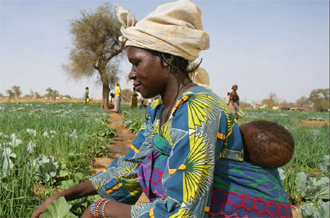
PIFs
The project has three major components with the following expected outcomes –
Component 1 aims at establishing a knowledge support platform on climate change impacts and risks – under this a geo-based climatic, agro-ecological and hydrological information system (Outcome 1.1) will be operational by the end of year 1; approx. 30 national and provincial planners, plus 235 local commune leaders and 50 staff from NGOs/CSOs will be trained on the use and interpretation of analyses from the established information system (Outcome 1.2)
Component 2 deals with the vulnerability reduction and strengthening of resilience in the management of natural and social assets in the project area – this includes cost-effective rewetting and replanting/ protection of indigenous grasses and herbaceous vegetation resilient to significant climatic variance (Outcome 2.1); ensuring flood and erosion control through a “surgical” and climate anticipatory approach (Outcome 2.2); protection of gazetted forests against climate induced bushfire (Outcome 2.3); establishment of an equitable and climate resilient plan for the use of pasture and water resources (Outcome 2.4); demonstration of polyculture and adaptive agro-ecological production systems in communal lands (Outcome 2.5) and; training of local commune leaders and resource users in climate adaptive and anticipatory management of natural and social assets (Outcome 2.6).
Component 3 aims at mainstreaming Climate change adaptation into local and regional development planning and finance. This will be achieved through – integration of climate risk management and climate resilient landscape management into the management (or master) plans of the project area (Outcome 3.1); incorporation of climate resilient poly-culture model into relevant forestry, agricultural and livestock management strategies, plans and investments (Outcome 3.2) and; establishment of wide collaboration frameworks for learning and sharing climate change concerns and options (Outcome 3.3).
Reducing risk and vulnerability to climate change in Colombia
With one of the highest rates of disaster occurrences in Latin America, Colombia experiences on average 2.97 disasters per year - floods and landslides accounted for a third of these between 1970-1999. The increasing intensity of these events has consequently pushed back advances in social development, leading to increased inequality and poverty. This UNDP-supported project, Reducing risk and vulnerability to climate change in the region of La Depresión Momposina in Colombia focused on the municipalities of Ayapel, San Marcos and San Benito Abad to reduce the vulnerabilities of communities and wetlands to climate-related flooding and drought risks.
PIFs
Led by the Ministry of Environment, this project sought to reduce the vulnerability of communities to the risks of flooding and drought associated with climate change and increase the resilience of ecosystems in this region. Its main activities focused on the municipalities of Ayapel in Córdoba, San Marcos and San Benito Abad, Sucre. This initiative was implemented in association with Local Climate Change Consolidation Platform, made up of community leaders and local institutions.
The project objective was to reduce the vulnerability of communities and of wetlands in the region of La Depresion Momposina to flooding and drought risks associated with climate change and variability. To achieve this objective the project included the following four components:
- The existing hydroclimatological and environmental information system (HEIS) is strengthened and used by local- and regional-level stakeholders, reducing their exposure to the impacts of climate change.
- Wetlands and their hydrology in the target area are rehabilitated as a means of reducing risk to flooding and drought associated with climate change and variability.
- Increased adaptive capacity of local communities in three targeted municipalities through the introduction of agroecological practices that help reduce their vulnerability to the impacts of climate change.
- Institutional and policy capacity strengthened for mainstreaming climate risk management and adaptation measures into planning and decision-making processes.
View Terminal Evaluation report (published in 2017) here on UNDP's Evaluation Resource Centre.
Reducing Risk and Vulnerability to Climate Change in Colombia - 20th December 2018
UNDP Colombia, April 6, 2018: The hanging gardens of Colombia
UNDP Colombia, January 11, 2017: Huertas familiares contra el cambio climático en la Mojana









